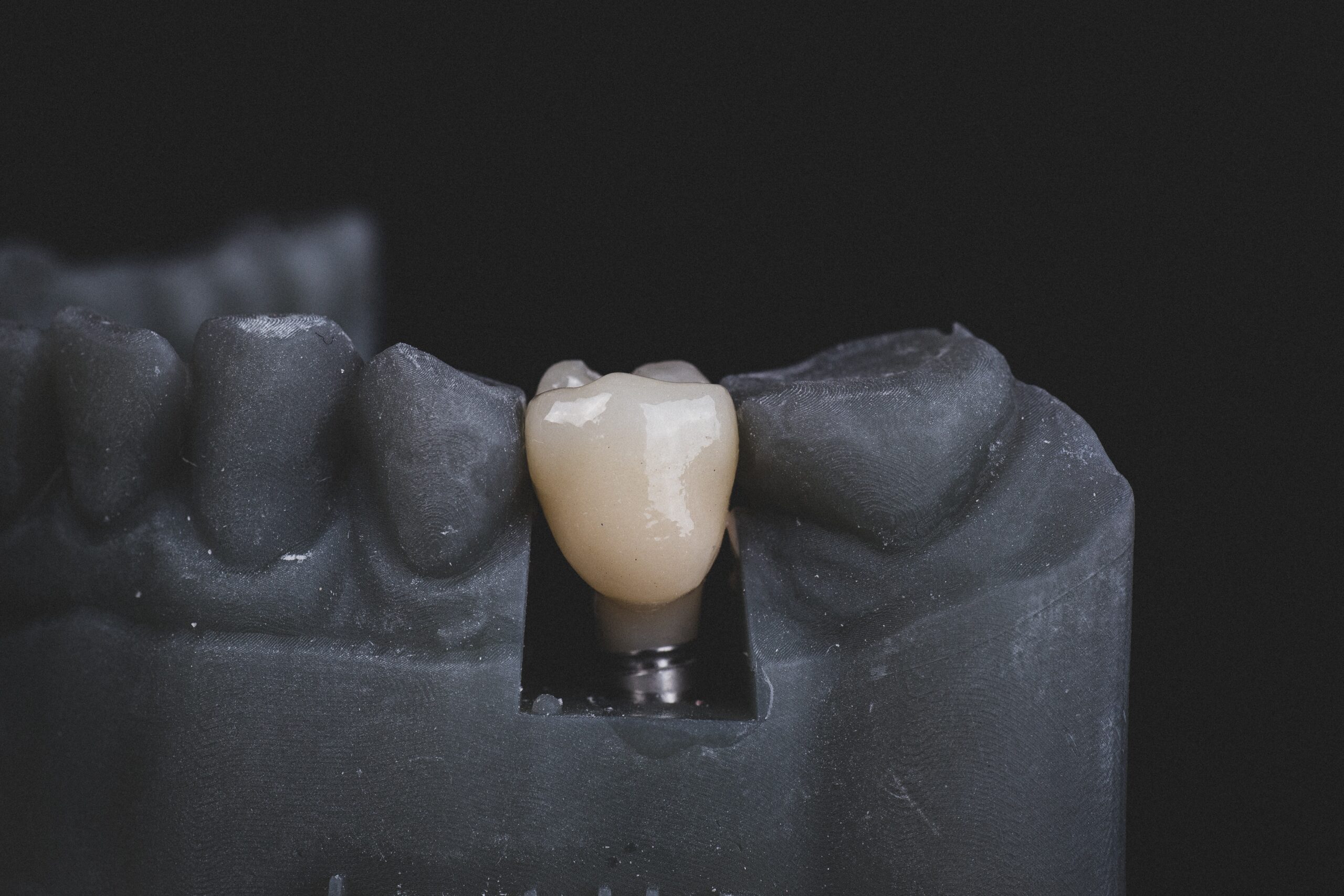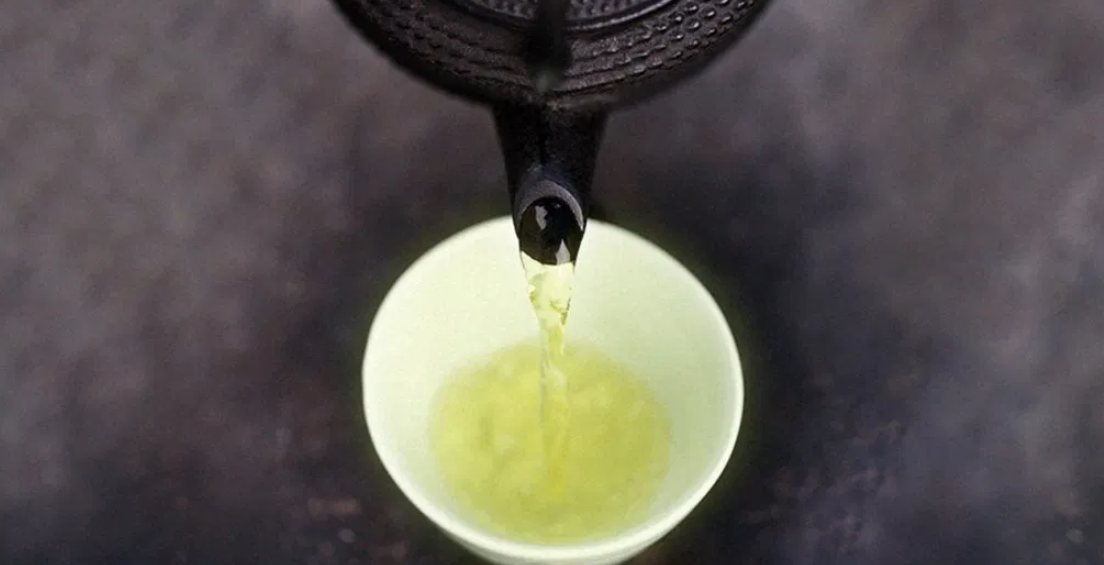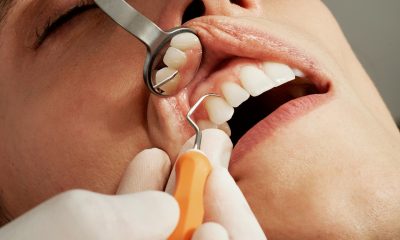Health
The Evolution of Dental Implants: From Ancient Times to Modern Day

Uncover the fascinating journey of dental implants through history with a deep dive into our article. Explore how ancient civilizations laid the groundwork for today’s cutting-edge technology.
Ever wondered how our ancestors dealt with missing teeth? How did we go from stone-age dentistry to high-tech implants? Well, hold onto your hats, because we’re about to take a whirlwind tour through “The Evolution of Dental Implants: From Ancient Times to Modern Day.”
An Ancient Solution: The First Known Dental Implants
Let’s hop in our time machine and go way back to 2000 BC. The ancient Chinese were using carved bamboo pegs to replace lost teeth. Crude? Absolutely! But, you’ve got to give them credit for innovation. Over in ancient Egypt, they were even using precious metals and gemstones. Talk about a bling-filled smile!
Bamboo Bites and Gold Grins: Materials of the Past
You might be thinking, why bamboo or gold? Well, the answer lies in their availability and workability. Bamboo was abundant in China, and its fibrous nature allowed for some give, resembling a natural tooth’s slight movement. Gold, on the other hand, could be easily molded and was believed to have mystical healing properties.
Enter the Iron Age: The Etruscan Contribution
Fast-forward a few centuries to the Etruscans of ancient Italy. They took the concept of dental implants to a new level by using animal teeth and even human teeth from another person or a recently deceased animal. Sound gruesome? Well, it wasn’t all sunshine and roses in those days, but it was a step in the right direction, showing an understanding of the need for a root structure.
Middle Ages to 18th Century: Trial, Error and Innovation
During the Middle Ages and beyond, there was a lot of, well, let’s call it “creative experimentation.” Think ivory from elephants and walruses, or even teeth purchased from the poor! But these methods had limited success due to rejection and infection. It was clear that a better solution was needed.
Forging Ahead: Introduction of Modern Materials
Enter the 18th century, and we’re starting to see some familiar faces. Materials like gold, silver, and even rubber were tried. The biggest breakthrough, however, was the introduction of porcelain teeth in the late 1700s. These offered a much more natural appearance, though they still lacked the durability of natural teeth.
The 20th Century: The Age of Modern Dental Implants
The 20th century brought about the major developments we associate with modern dental implants. In the 1950s, Swedish orthopedic surgeon Per-Ingvar Brånemark made a groundbreaking discovery – titanium could bond with bone tissue, a process he termed “osseointegration.”
The Game Changer: The Advent of Titanium Implants
Why was this discovery so game-changing? Well, it meant that dental implants could be securely fixed in the jawbone, mimicking the way natural teeth are anchored. This resulted in improved functionality, durability, and appearance, and laid the foundation for the implants we see today.
Modern Day Dental Implants: Precision, Durability, and Aesthetics
In the present day, dental implants have come a long way, baby! They’re designed with precision, made from durable titanium, and topped with ceramic crowns that mimic natural teeth down to the tiniest detail. We’ve even seen advancements like zirconia implants and the use of 3D printing and CAD/CAM technology.
The Cutting Edge: 3D Printing and CAD/CAM
3D printing and CAD/CAM technology have enabled us to achieve unprecedented precision in implant design and placement. How so? By allowing for customization to the individual’s bone structure and bite, leading to improved comfort and effectiveness. Isn’t technology a wonderful thing?
Frequently Asked Questions
1. When were dental implants first used? Dental implants date back to around 2000 BC, when the ancient Chinese used bamboo pegs to replace lost teeth.
2. What materials were used for dental implants in the past? Early materials included bamboo, precious metals, animal teeth, and human teeth. Later, materials such as ivory, gold, silver, rubber, and porcelain were introduced.
3. Who discovered the use of titanium in dental implants? Swedish orthopedic surgeon Per-Ingvar Brånemark discovered in the 1950s that titanium could bond with bone tissue, paving the way for modern dental implants.
4. What are modern dental implants made of? Modern dental implants typically consist of a titanium post that is inserted into the jawbone, and a ceramic crown that mimics the appearance of a natural tooth.
5. How has technology improved dental implants? Modern technology like 3D printing and CAD/CAM has allowed for precise customization of dental implants, improving their comfort and effectiveness.
6. Are dental implants a good solution for missing teeth? Yes, dental implants can provide a durable, functional, and aesthetic solution for missing teeth. However, they may not be suitable for everyone, and a dental professional should be consulted.
Conclusion
“The Evolution of Dental Implants: From Ancient Times to Modern Day” paints a vivid picture of human ingenuity and resilience. From the crude bamboo pegs of ancient China to the precision-engineered titanium implants of today, it’s clear that our quest for a perfect smile is as old as civilization itself. And who knows what exciting developments the future will bring?
Health
14 Benefits of Oolong tea and side effects Table of Contents
Health
Contraindications of drinking green tea

Discover the contraindications of drinking green tea.
Drinking green tea in excess can cause some harmful side effects for the body, which are necessary to know
Green tea is one of the most popular in the world. In addition to having a characteristic flavor, its different properties make it a highly beneficial drink for health, mainly due to its antioxidant power. However, its consumption also includes a series of contraindications
Among the benefits of green tea highlights its ability to improve memory, helps lose body fat, increases physical performance, is stimulating, can prevent different types of cancer, and even reduce the risk of cardiovascular diseases.
Among all the types of green tea that exist, matcha stands out, a tea of oriental origin with important properties for health and that stands out for its powder composition. In recent years it has become the travel companion of celebrities, athletes, and famous people.
Contraindications of drinking green tea
Many people have incorporated green tea into their day-to-day. The truth is that it is a great choice since it can provide energy to face the workday, accelerate the metabolism, and can even help improve mood.
However, like any food, the consumption of green tea carries a series of contraindications that it is necessary to know.
Thus, from ‘Todo Disca’ we are going to expose some of the negative effects that the ingestion of this type of infusions can produce.
In this sense, researchers from the National Institute of Health of the United States affirm that the consumption of green tea mixed with different medications, such as contraceptive pills, antibiotics, stimulants, or alcohol can be harmful to health.
And these are some of the side effects that excess green tea consumption can generate for the body:
1. Irritability: Some people feel some discomfort at the time of their intake. That is to say, it produces an effect contrary to the one they seek at first.
2. Insomnia: Green tea can cause sleep problems for many people. And is that it is a stimulating drink that contains some doses of caffeine, although in a lower proportion than traditional coffee.
3. Dizziness and nausea: This infusion can be heavy for delicate stomachs and generate some type of gastrointestinal discomfort. Therefore, it is not advisable to take on an empty stomach.
4. Palpitations: Due to its stimulating characteristics, it can sometimes cause palpitations. Along these lines, experts recommend reading the indications and ingredients of all types of tea.
5. Disadvantages during pregnancy: Green tea is rich in tannins, so it can reduce the absorption of folic acid and iron. Due to this, this drink is not recommended for pregnant or lactating women.
Generally, green tea is an infusion with excellent health properties. In this way, moderate consumption usually brings different benefits to the body.
However, it is advisable to take these contraindications into account, and if you feel any side effects, see a medical specialist.
Through the following link, you will be able to know the contraindications to drink matcha tea, a variety of oriental origin widely established in Europe and whose consumption has become popular in recent years
Health
15 Benefits of pumpkin seeds and side effects

Table of Contents
- 1. Pumpkin seeds to boost the immune system
- 2. They are high in magnesium
- 3. Pumpkin seeds are low in calories
- 4. Pumpkin seeds are rich in iron
- 5. Relieve symptoms of irritable bladder
- 6. Pumpkin seeds are high in fiber
- 7. Benefits of pumpkin seeds for cholesterol
- 8. Pumpkin seeds are a natural anti-inflammatory
- 9. Pumpkin seed oil to counter the effects of menopause
- 10. Pumpkin seeds help healthy skin, hair and nails
- 11. Pumpkin seeds help eliminate kidney stones (kidney stone)
- 12. Pumpkin seeds are rich in vegetable protein
- 13. Pumpkin seeds are a great substitute for peanuts
- 14. benefits of pumpkin seeds on your hormonal health
- 15. Pumpkin seeds are a good source of potassium
- Discover the 15 powerful health benefits and virtues of pumpkin seeds and side effects.
They are packed with nutrients and vitamins, are high in protein, fiber and are low in calories!
-
1. Pumpkin seeds to boost the immune system
Pumpkin seed helps boost the immune system , especially because it is rich in zinc.
Remember that zinc allows the proper functioning of the immune system by ensuring optimal activity of T lymphocytes. Zinc could also help the body to better protect itself against colds, flu, conjunctivitis and other infections.
2. They are high in magnesium
Anxiety , migraines, muscle cramps and PMS can result from magnesium deficiency. A 28g serving of pumpkin seeds provides almost 20% of the recommended daily allowance.
The magnesium intervenes in the transformation of food into energy, the transmission of nerve impulses, muscle relaxation and the formation of bones and teeth.
- Acting with calcium and potassium, it regulates the heart rate and participates in the production of insulin.
Several studies have also demonstrated the virtues of magnesium in the prevention of cardiovascular disease.
3. Pumpkin seeds are low in calories
Pumpkin seeds are lower in calories than many nuts. A 28g serving of pumpkin seeds (2 tablespoons) without their raw shell has 126 calories, which is almost 40 calories less than almonds and 60 calories less than walnuts for a single serving.
4. Pumpkin seeds are rich in iron
Pumpkin seeds are a great source of iron. A 28g serving of pumpkin seeds provides almost 5% of the recommended daily allowance.
Remember that iron is essential for health and is involved in a multitude of functions in the human body, in addition to transporting oxygen through the body.
However, iron from plant sources is not as well absorbed as iron from animal sources. In this sense, it is recommended that vegetarians consume twice as much iron in order to ensure that they do not suffer from deficiencies that may in particular cause fatigue and weakness.
5. Relieve symptoms of irritable bladder
While more scientific studies are to be conducted on the subject to understand all of its mechanisms, pumpkin seeds are believed to help relieve symptoms of irritable bladder and urination disorders associated with benign prostatic hyperplasia (BPH). .
6. Pumpkin seeds are high in fiber
Pumpkin seeds also provide a healthy dose of fiber . A 28g serving of pumpkin seeds provides 5g of fiber, or 20% of the recommended daily intake.
In addition to calming hunger, fiber promotes healthy digestion and helps regulate bowel function.
7. Benefits of pumpkin seeds for cholesterol
The phytosterols in pumpkin seeds help lower ” bad” cholesterol levels . Phytosterol is the plant equivalent of cholesterol. However, rather than blocking the arteries, phytosterol rather helps to clean them, recalls WebMD.
8. Pumpkin seeds are a natural anti-inflammatory
Source of antioxidants, pumpkin seeds have an anti-inflammatory effect and thus help defend the body against damage caused by excess free radicals .
If free radicals oxidize DNA (the body’s genetic code) in a cell’s nucleus, a cell mutation can occur, which can start cancer. Oxidation of cholesterol in the blood can lead to the formation of fatty deposits in the arteries, which can lead to heart disease or stroke.
Excess free radicals are also involved in cataracts, immune deficiencies, arthritis and premature cell aging; their role in these diseases is the subject of intensive research.
9. Pumpkin seed oil to counter the effects of menopause
Researchers have studied the impact of pumpkin seed oil in better combating symptoms of menopause , including hot flashes and headaches.
While further studies need to be done, pumpkin seed oil has been shown to be effective in alleviating these symptoms in the subjects of this research.
10. Pumpkin seeds help healthy skin, hair and nails
The pumpkin seeds contain essential fatty acids, zinc, vitamin A and vitamin E . These nutrients help maintain glowing skin , strong, healthy hair and nails .
While more research is needed to confirm these benefits, a study with 76 participants also looked at the benefits of pumpkin seed oil in helping hair regrowth in men with alopecia.
In subjects who consumed 400mg of pumpkin seed oil for 24 weeks, regrowth was 40% greater than participants who took a placebo.
11. Pumpkin seeds help eliminate kidney stones (kidney stone)
Pumpkin seeds are also said to prevent kidney stones from forming . To better counter kidney stones, it is also recommended to drink plenty of water, limit sodium intake, and consume no more than 2g of vitamin C on a daily basis.
The kidneys are designed to remove particles of salts and minerals that end up in the ureter, a long, narrow duct leading to the bladder; they will then be expelled in the urine.
Problems arise when a chemical imbalance or other deficient process promotes the agglutination of particles, which turn into crystals and then into a kidney stone.
12. Pumpkin seeds are rich in vegetable protein
This food is also a good source of vegetable protein . A 28g serving of pumpkin seeds provides 5g of protein, or 10% of the recommended daily allowance.
The proteins include the ability to develop and maintain the muscles, in addition to help regulate and control hunger cravings.
Vegetarians and vegans, however, should make sure that their diet meets all their amino acid needs by combining different sources of plant protein (legumes and grain products, for example).
13. Pumpkin seeds are a great substitute for peanuts
In 10 years, cases of peanut allergy have doubled, forcing several schools to ban this food. Pumpkin seed butter is a good alternative.
At lunch or as a side dish for a snack, it will provide children with some of the essential fatty acids and proteins they need.
14. benefits of pumpkin seeds on your hormonal health
Pumpkin seeds may help women with hormonal imbalance due to the phytoestrogens they contain. However, further scientific studies need to be carried out to this effect.
The Extenso Nutrition Reference Center reminds us that phytoestrogens are compounds of plant origin which, when consumed in sufficient quantities, can act on your body in a manner similar to estrogen.
In addition to regulating the menstrual cycle, I pregnancy, and breastfeeding, estrogen helps prevent demineralization of your bones and keeps your blood vessels healthy.
15. Pumpkin seeds are a good source of potassium
Finally, pumpkin seeds provide a good source of potassium. A 28g serving provides 260mg of potassium , or nearly 7% of the recommended daily allowance.
Potassium is present in the form of a solution in the body and almost all of it is concentrated inside cells.
Like chlorine and sodium, it is an electrolyte, a substance that charges positively or negatively when dissolved.
The body needs a balance between potassium, chlorine and sodium to perform a multitude of essential functions.
We hope the article on the 15 powerful health benefits of pumpkin seeds has been of help.
-

 Food1 year ago
Food1 year ago10 + Benefits of carrot juice and side effects
-

 Benefits4 months ago
Benefits4 months agoThe Benefits of Joining Gym Lumolog – Improve Your Fitness & Health
-

 Health1 year ago
Health1 year ago50 Super Healthy (And Very Often Cheap) Foods
-

 Health1 year ago
Health1 year ago5 Shocking health benefits of kinkeliba and side effects
-

 Food1 year ago
Food1 year ago8 shocking benefits of leek juice and side effects
-

 Health1 year ago
Health1 year agoBenefits of guava leaves Sensually
-

 Weight Loss1 year ago
Weight Loss1 year agoChaz Bono weight loss secret
-

 Health1 year ago
Health1 year ago15 Benefits of lipton tea and side effects



